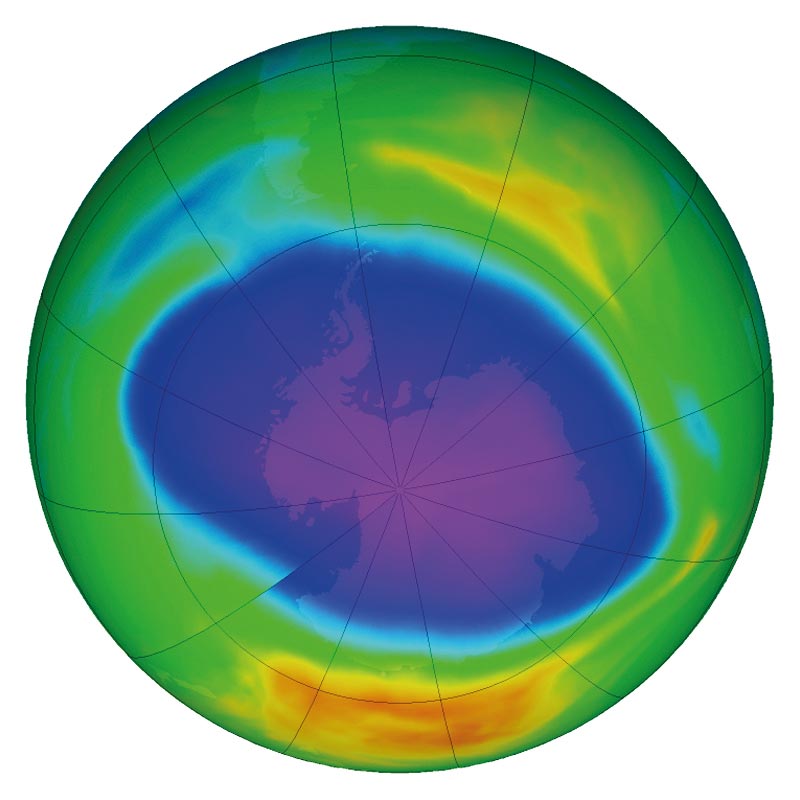
Nasa Ozone WatchMap shows the hole in the ozone layer over Antarctica in October 2021Nasa Ozone Watch
The thin layer of ozone that surrounds the Earth, enabling life to exist on the planet, is repairing itself and should be recovered in a few decades, reaching the same condition as prior to the 1980s. The good news was announced in the most recent report on the subject released by the World Meteorological Organization (WMO) and four other institutions in January. According to the document, if the world maintains its ban on chlorofluorocarbons (CFCs)—volatile compounds that destroy ozone in the atmosphere—this thin layer of gas should be recovered in most parts of the planet by 2040. Close to the poles, where it is less dense, it will take longer to recuperate: the hole in the ozone layer at the North Pole is expected to close in around 2045 and in Antarctica at the South Pole by 2066. The ozone layer is being restored thanks to a global effort to stop the use of CFCs, which for decades were used in the production of insulating foams or as refrigerant gases and propellants in aerosol sprays. They were banned by the 1989 Montreal Protocol, but emissions have been detected in parts of China in the past decade. According to the latest report, these emissions have dropped sharply.
Republish